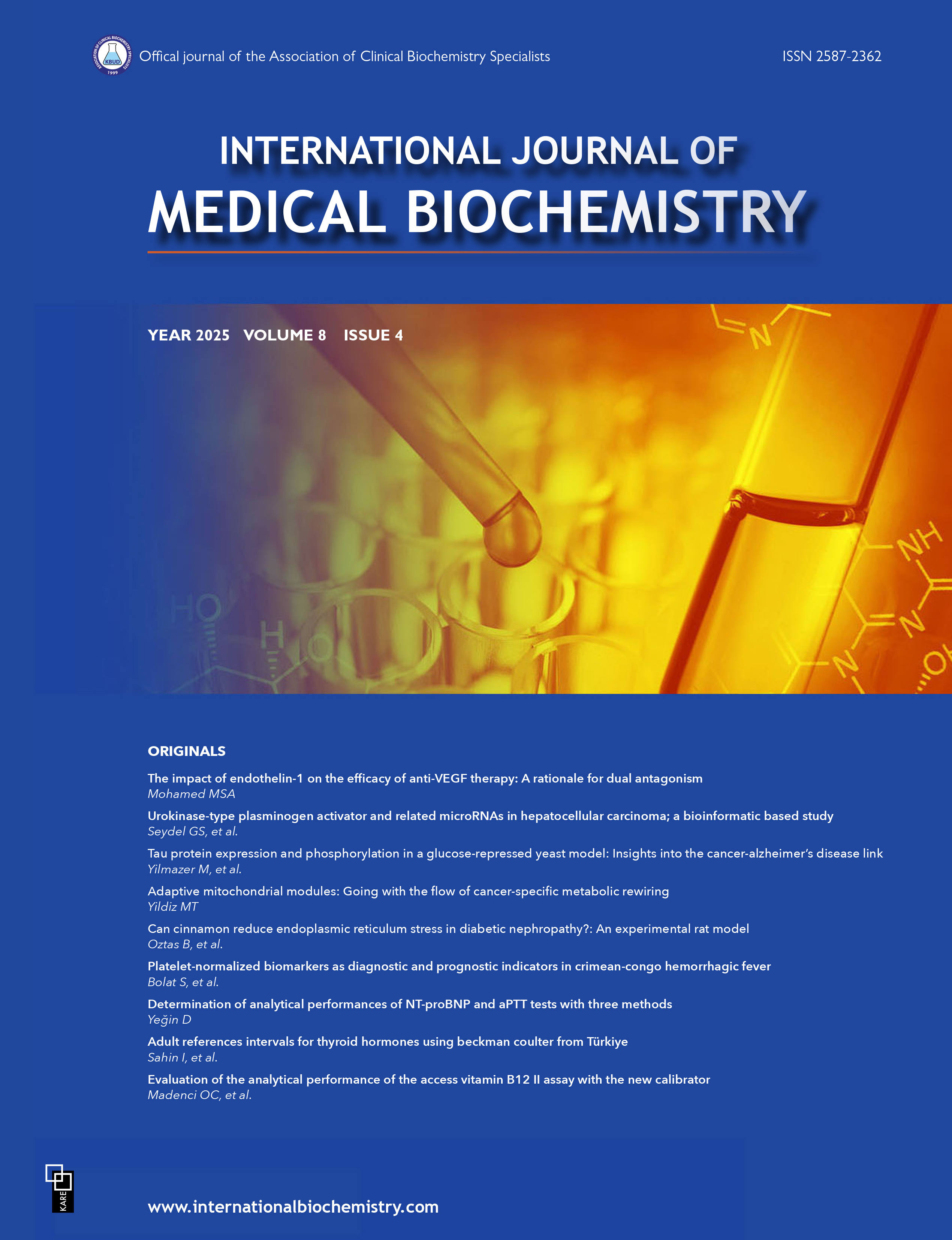Differential in vitro effects of oncogenic pathway inhibitors on carbonic anhydrase-IX, xanthine oxidase, and catalase in colorectal cancer
Beyza ECEM OZ BEDIR, Emine Terzı, Ozen OZENSOY GULERDepartment Of Medical Biology, Ankara Yildirim Beyazit University, Ankara, TurkeyINTRODUCTION: PI3K/Akt/mTOR (The phosphatidylinositol-3-kinase/Protein Kinase B/Mammalian Target of Rapamycin) and Mitogene Activated Protein Kinase oncogenic signaling pathways play a role in the colon cancer development process by over-activating during carcinogenesis and proliferate cancer cells and stimulate metastasis. Carbonic Anhydrase-IX (CA-IX), one of the most important CA enzymes, is a tumor-associated enzyme and a transmembrane protein which reduce pH in the tumor microenvironment, leading to increased acidification. CA also increases the production of reactive oxygene species (ROS) and enables the activation of cancer signaling pathways. Due to the increase in ROS production, the antioxidant system is also activated. In this study, we aimed to investigate the effects of oncogenic pathway inhibitors on CA-IX and oxidant/antioxidant enzymes in colorectal cancer (CRC).
METHODS: In this study, Acetazolamide (AZA)-CA inhibitor, Rapamycin (RAPA)-mTOR inhibitor, and Vemurafenib (VMF)-B-Raf inhibitor were applied to CRC cell line HT-29. The effects of AZA, RAPA, and VMF on oxidant/antioxidant system enzymes Xanthine oxidase (XO) and Catalase (CAT) activities were measured at 340 nm in Epoch Microplate Spectrophotometer. In addition, inhibition of CA-IX by AZA, RAPA, and VMF was determined using the Human CA IX ELISA Kit.
RESULTS: According to the results of the CA-IX ELISA test, the CA-IX protein levels were 6.6 ng/μl and 4.6 ng/μl (p<0.05) in the HT-29 cell lines untreated and AZA-treated applied, respectively. CA-IX protein levels were 6.25 ng/μl and 5.92 ng/μl (p≤0.05) in untreated and RAPA-treated HT-29 cell lines, respectively. CA-IX protein levels were found to be 3.04 ng/μl and 2.47 ng/μl (p≤0.05) in untreated and VMF-treated HT-29 cell lines, respectively. AZA, RAPA, and VMF inhibitors applied to the HT-29 cell line caused a decrease in CAT activity (p<0.001) while an increase in XO activity (p≤0.001).
DISCUSSION AND CONCLUSION: This study will suggest a different perspective on colon cancer treatment. When our results are considered, an attitude can be taken to determine the treatment plan by taking into account the decreased antioxidant and CA-IX enzyme levels after the use of oncogenic inhibitors. Analyzing other antioxidant enzymes in the same way will add a different dimension to the study. In addition, the combined use of these inhibitors and the determination of the effects of different cancer pathway inhibitors on these enzymes will form the basis of our future studies.
Manuscript Language: English







